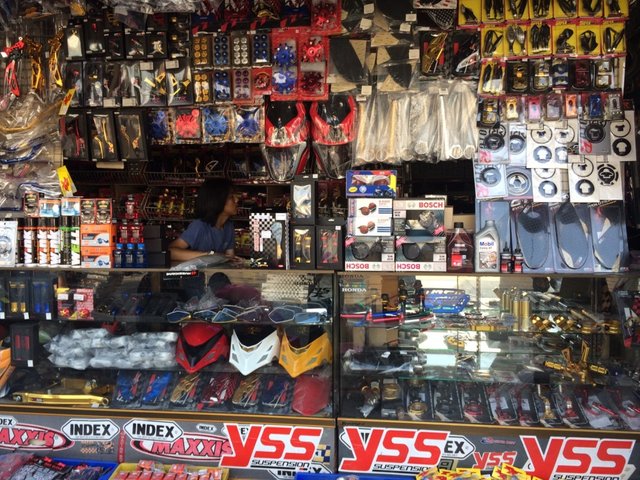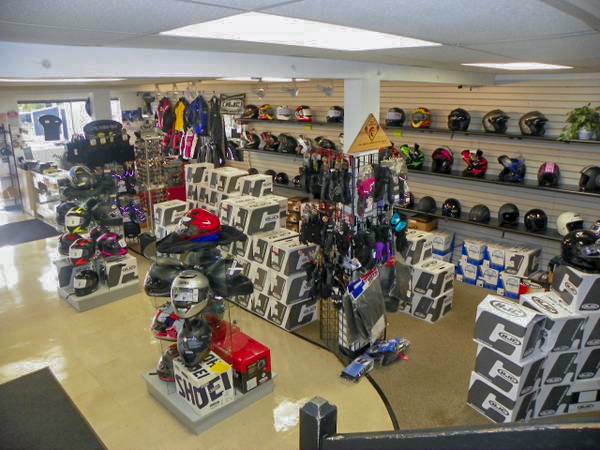Explore the most up to date Motocross Gear NZ for each Degree of Rider
Explore the most up to date Motocross Gear NZ for each Degree of Rider
Blog Article
Understanding the Crucial Parts of a Motorcycle: A Comprehensive Guide for Lovers
For motorbike lovers wanting to boost their riding experience and ensure their bikes run smoothly, comprehending the crucial components of a motorcycle is vital. Each component, from the engine's complex workings to the vital role of the braking devices, not only influences performance but likewise safety and convenience. This overview will certainly go through the essential components that every rider should know with, allowing informed choices in both upkeep and potential upgrades. As we begin this exploration, one must ask: exactly how does each part communicate to produce the smooth experience every enthusiast seeks?
Engine Parts

The camshaft plays a critical duty in managing the timing of the engine's valves, making sure the accurate opening and closing essential for reliable fuel and air consumption, as well as exhaust expulsion. This timing is critical to maintaining ideal engine performance and performance. In addition, the carburetor or fuel injection system, depending on the bike model, is in charge of mixing air with gas in the correct ratio for burning.
The cooling system, either air or liquid-based, works to preserve the engine's temperature level within functional limits, preventing overheating and ensuring durability - motorbike shop. Each component, diligently developed and incorporated, contributes to the seamless operation of the engine, defining the motorcycle's power output and general performance
Transmission System
Indispensable to the motorbike's functionality, the transmission system guarantees effective power transfer from the engine to the wheels. This system comprises a number of vital parts, including the clutch, gearbox, and last drive, each playing an essential duty in converting the engine's power right into movement. The clutch, commonly operated by a hand lever, serves to involve and disengage the engine from the transmission, enabling smooth gear adjustments and regulated velocity.
The transmission, frequently referred to as the transmission appropriate, has a collection of equipments that cyclists can manually shift through to adjust the bike's rate and torque output. These gears are set up in a sequence that enables the motorcycle to accelerate smoothly and maintain optimum engine efficiency across various rates. The majority of bikes make use of a consecutive transmission, needing the biker to change gears in a fixed order.
Braking Devices
While comprehending the transmission system is key to taking advantage of a motorbike's power, equally vital is the ability to control and stop that power successfully, which is where braking devices come into play. Brakes are crucial for safety and efficiency, offering the motorcyclist with the required control to browse different terrains and conditions. Typically, bikes feature 2 sorts of stopping systems: disc brakes and drum brakes.
Disc brakes are extra common in modern motorcycles due to their premium performance. They are composed of a brake disc, caliper, and pads. When triggered, the caliper squeezes the brake pads versus the spinning disc, converting kinetic power right into warmth, consequently reducing the wheel. This system uses far better warmth dissipation, regular efficiency, and improved quiting power, especially in wet conditions.
Alternatively, drum brakes, though less usual, are still found in some bikes. They work by pressing brake shoes against the inner surface of a drum affixed to the wheel. While generally much less reliable in warmth dissipation and stopping power, drum brakes are simpler and more cost-efficient.
Understanding these braking systems' nuances permits motorcyclists to keep their bikes properly purple motorcycle gloves and value the design that makes certain secure and effective quiting.
Suspension and Steering
Suspension and steering systems are essential parts that considerably influence a motorbike's handling and adventure convenience. The shock absorber, containing forks at the front and shock absorbers at the back, soaks up roadway irregularities, improving stability and control. Front forks, upside down or typically telescopic, compress and rebound to minimize influences, while back shock absorbers preserve tire contact with the roadway, vital for traction and safety.
Guiding, focused around the handlebars, connects the biker to the motorcycle's directional control. The guiding head bearings make certain smooth procedure, allowing specific maneuverability. Proper alignment and maintenance of these bearings are vital for predictable steering feedback and lowering motorcyclist fatigue.
The suspension's adjustability is one more crucial facet; preload, damping, and rebound setups permit modification to match different riding problems and styles. This flexibility is crucial for optimizing performance, whether browsing metropolitan roads or tackling tough tracks. Innovations like digital suspension systems provide real-time modifications, enhancing experience quality throughout varied terrains.

Electric Systems
After ensuring a controlled and smooth ride with effective suspension and guiding systems, interest transforms to the electrical systems, pop over here a pivotal aspect of contemporary motorcycles. These systems play an important duty not only in starting the engine yet also in powering numerous components that boost the capability and safety of the motorbike.
At the heart of a bike's electric system is the battery, which stores electric power needed for starting the engine and powering complementary systems - motocross gear. women's motorcycle riding jacket The generator or generator, paired with the rectifier-regulator, guarantees the battery remains charged while the motorbike is in procedure, converting mechanical energy into electric power and keeping voltage degrees
The ignition system, one more crucial part, is in charge of stiring up the air-fuel blend in the engine's cylinders. Modern bikes commonly utilize a digital ignition system, supplying better effectiveness and reliability compared to traditional systems.
Lighting systems, consisting of headlights, tail lights, and indications, are also crucial, ensuring presence and safety for the rider. Extra electronic parts such as sensing units, control devices, and shows contribute to innovative features like gas shot monitoring, anti-lock braking systems (ABDOMINAL), and electronic control panels, further enhancing the riding experience.
Conclusion
An extensive comprehension of a motorbike's crucial components, consisting of the engine, transmission system, braking mechanisms, suspension, guiding, and electric systems, is indispensable for enthusiasts aiming to optimize security, efficiency, and convenience. Mastery of these components enables informed decisions relating to maintenance and upgrades, inevitably enhancing the riding experience. By incorporating this knowledge, cyclists can guarantee their motorcycles operate at peak efficiency and integrity, therefore optimizing both pleasure and long life of their automobiles.
For motorbike enthusiasts looking to elevate their riding experience and guarantee their bikes run efficiently, comprehending the important elements of a bike is paramount.Indispensable to the motorbike's capability, the transmission system makes sure efficient power transfer from the engine to the wheels.While comprehending the transmission system is crucial to harnessing a motorbike's power, just as vital is the ability to control and stop that power successfully, which is where stopping systems come into play. Typically, bikes include two types of braking systems: disc brakes and drum brakes.
A thorough comprehension of a motorcycle's important parts, consisting of the engine, transmission system, stopping systems, suspension, steering, and electric systems, is vital for fanatics aiming to optimize efficiency, safety and security, and convenience.
Report this page